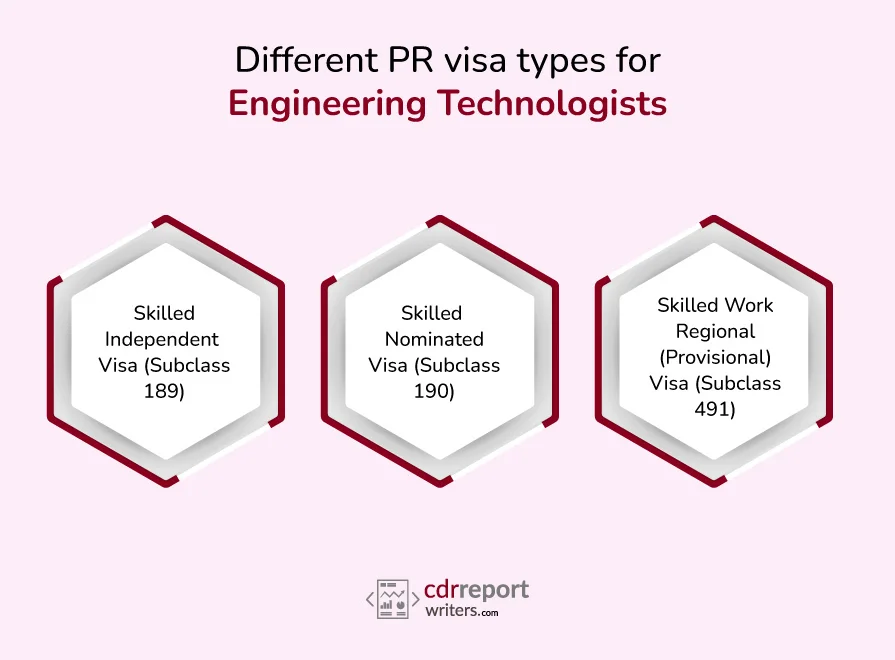
Can an Engineering technologist get a PR visa in Australia?
Australia has long been a preferred destination for individuals seeking better career opportunities, high living standards, and a vibrant multicultural environment. With its strong economy, excellent education system, and diverse industries, Australia offers a range of pathways for skilled workers to obtain permanent residency.
In the realm of skilled migration to Australia, the role of an engineering technologist holds a significant place. As professionals who bridge the gap between engineers and technicians, engineering technologists play a pivotal role in various industries.
For those aspiring to call Australia home and obtain Permanent Residency (PR) status, the journey involves understanding the intricacies of the ANZSCO (Australian and New Zealand Standard Classification of Occupations) code, skill assessments, PR points system, and navigating through the complex pathways.
In this comprehensive guide, we will explain whether Engineering technologists get a PR visa in Australia or not and decode the process of securing a PR visa in Australia.
Role of Engineering Technologists – ANZSCO Insights
In the ANZSCO, engineering technologists are classified under the code 233914. These professionals apply scientific and engineering principles to develop and implement technological solutions, often bridging the gap between conceptual design and actual product creation.
They play a crucial role in innovation, research, and development across industries such as manufacturing, telecommunications, and construction. As Australia seeks to address skill shortages and bolster its economy, engineering technologists are sought after for their expertise.
ANZSCO Skill Assessment for Engineering Technologists
A pivotal step in the journey to Australian PR for engineering technologists is the skill assessment. This process entails the evaluation of qualifications, experience, and skills against Australian standards by a designated assessing authority.
For engineering technologists, Engineers Australia is the primary authority. The assessment verifies that your qualifications align with the Australian framework, ensuring that your expertise is well-suited for the country’s industries.
Engineers Australia, as the authoritative body, conducts thorough assessments to determine whether an applicant’s educational background and work experience meet the standards expected of professionals in the engineering technologist field. This assessment is a crucial cornerstone for further progress in the PR application process.
Different PR visa types for Engineering Technologists
Gaining PR status in Australia involves navigating through various visa subclasses, each with its own set of requirements and benefits.

1. Skilled Independent Visa (Subclass 189)
The Subclass 189 visa caters to skilled professionals who do not have employer sponsorship. It operates on a points-based system, taking into account factors such as age, English proficiency, qualifications, and work experience.
With engineering technologists falling under the ANZSCO code 233914, meeting the criteria under this code enhances your eligibility for this visa. Meeting the skill assessment requirement by Engineers Australia is crucial to move forward with the application.
2. Skilled Nominated Visa (Subclass 190)
The Subclass 190 visa requires nomination by an Australian state or territory government. While it mandates a higher point threshold compared to the Subclass 189 visa due to the nomination component, it also provides additional points for the nomination. This pathway allows engineering technologists to contribute their skills to the specific region that nominates them.
3. Skilled Work Regional (Provisional) Visa (Subclass 491)
As a pathway designed to address skill shortages in regional areas, the Subclass 491 visa provides an opportunity for engineering technologists to explore regions beyond the major cities.
Obtaining sponsorship from a state or territory government, or being nominated by an eligible family member residing in a designated regional area, is essential. This visa requires a commitment to reside and work in the regional area for a certain period before transitioning to PR through the Subclass 191 visa.
Learn More: How to write and lodge an Expression of Interest (EOI) effectively? 🧑🏽✈️🏆
Requirements for Engineering Technologist PR Visa Application
While the requirements for each visa subclass might vary, there are common eligibility criteria that engineering technologists need to fulfill to apply for a PR visa in Australia:
1. Qualifications
Engineering technologists typically need to hold relevant qualifications, such as a Bachelor’s degree or higher in an engineering-related field. The degree should be recognized by the relevant Australian assessing authority.
2. Work Experience
Candidates should have relevant work experience in their field. The amount of required work experience can vary based on the visa subclass. Generally, a higher level of work experience can earn more points in the points-based system.
3. English Language Proficiency
Applicants need to demonstrate English language proficiency through tests such as IELTS, or PTE. Higher English scores can contribute to earning more points.
4. Skills Assessment
Engineering technologists must undergo a skills assessment conducted by a relevant assessing authority like Engineers Australia. This assessment evaluates the candidate’s qualifications and work experience to ensure they meet Australian standards.
5. Health and Character Checks
All PR visa applicants must meet health and character requirements. This includes undergoing medical examinations and providing police clearance certificates.
PR Points for Engineering Technologists
Points play a crucial role in PR visa applications. Factors such as age, English language proficiency, qualifications, and work experience contribute to the total points. Engineering technologists with superior English skills and substantial work experience are likely to accumulate higher points, enhancing their chances of receiving an invitation to apply for a PR visa.
The points system is a dynamic aspect of the Australian immigration process for migration skills assessment, with each factor contributing to the overall score. Age, for instance, has a significant influence on the total points. Applicants between the ages of 25 and 32 tend to receive the maximum points in this category.
English language proficiency is another crucial factor, with higher scores in standardized tests like IELTS, or PTE contributing to a greater number of points. Furthermore, the educational qualifications and experience of engineering technologists can contribute substantially to the final points tally.
Learn More: How to write ACS RPL Report for Database Administrator? ⏱⌛️
Engineering Technologist Jobs and the SOL
The Skilled Occupation List (SOL) provides a glimpse into the occupations in demand in Australia. Engineering technologists often find their roles listed here, reflecting the nation’s recognition of their skills and contribution to various sectors. Being on the SOL can significantly impact your eligibility for certain PR pathways.
Staying updated with changes to the SOL is crucial for engineering technologists. The Australian government periodically reviews and updates the list to align with the nation’s evolving needs. Prospective applicants should monitor changes to the SOL to ensure their occupation remains on the list, as this status greatly influences PR eligibility and application success.
Recent Trends: Engineering Technologist Invitation Round 2023
Staying updated with recent trends is vital. The Engineering Technologist Invitation Round for 2023 indicated the level of demand for professionals in this field. The invitation round details provide insights into the minimum point requirement, the frequency of invitations, and the competition level, aiding aspiring engineering technologists in their PR journey.
In 2023, the invitation round demonstrated the demand for engineering technologists, indicating a positive trend for those aspiring to secure a PR visa. With the invitation round revealing specific point thresholds, candidates can gauge their eligibility and assess their prospects of receiving an invitation.
By aligning their scores with these thresholds, engineering technologists can strategically enhance their chances of moving forward in the PR application process.
PR Status and its Benefits in Australia
Gaining PR status is a significant achievement. It offers numerous advantages, including the ability to live and work in Australia indefinitely. Engineering technologists can access healthcare, education, and social security benefits. Furthermore, PR status can serve as a stepping stone towards Australian citizenship, fostering full integration into the country’s fabric.
The privileges associated with PR status extend to healthcare access, allowing engineering technologists and their families to benefit from Australia’s world-class healthcare system. Additionally, access to education facilities, both for the professionals themselves and their dependents, ensures a bright future for their families.
Social security benefits provide a safety net during challenging times, promoting stability and security in a new country.
Engineering Technologist Delta Immigration
Navigating the intricate landscape of Australian immigration can be challenging. Many professionals seek assistance from reputable immigration consultants, such as Engineering Technologist Delta Immigration. These experts specialize in guiding engineering technologists through the nuances of the application process, ensuring that every step is executed seamlessly.
Engineering Technologist Delta Immigration stands as a beacon for those seeking clarity and guidance in their PR journey. With a deep understanding of the intricacies of the immigration process, these consultants offer invaluable insights into ANZSCO codes, skill assessments, visa subclass selection, and documentation.
By partnering with such consultants, engineering technologists can navigate the complex pathway with confidence, increasing the likelihood of a successful PR application.
Learn More: 12 things to consider while writing CPD for Engineers Australia ⏱⌛️
Importance of STEM Qualifications for PR
Science, Technology, Engineering, and Mathematics (STEM) qualifications hold immense significance in the PR journey. Australia places a premium on STEM professionals due to their contributions to innovation and economic growth. Engineering technologists with STEM qualifications are likely to garner more attention from employers and immigration authorities alike.
STEM qualifications underscore an individual’s expertise and specialization in fields that are critical to Australia’s advancement. With a strong emphasis on research, development, and technological progress, STEM professionals, including engineering technologists, are positioned to drive innovation and contribute substantively to the nation’s growth.
Demonstrating STEM qualifications enhances an applicant’s profile and positions them favorably in the competitive PR application process.
Engineers Australia Occupation List for Engineering Technologists
The Engineers Australia Occupation List outlines the demand for various engineering roles in the country. For engineering technologists, this list serves as a compass, indicating the fields in which their skills are highly sought after. Staying abreast of changes in the occupation list can provide valuable insights for career and PR planning.
The Engineers Australia Occupation List is a comprehensive guide that engineering technologists can leverage to strategically plan their careers and immigration journeys. By aligning their skills, experience, and qualifications with the demand outlined in the list, professionals can make informed decisions about specialization and skill development.
This list not only influences job prospects but also impacts eligibility for various PR pathways, making it a crucial resource for engineering technologists navigating the complexities of Australian immigration.
Learn More: How IT Professionals can successfully migrate to Australia? ✈️✈️
Conclusion
In answer to the question “Can an engineering technologist get a PR visa in Australia?” the resounding answer is yes. With the right qualifications, skill assessment, and PR visa subclass selection, engineering technologists can embark on a journey toward permanent residency in Australia.
By aligning their skills with Australia’s needs, engineering technologists contribute to the country’s growth while enjoying the benefits of PR status, elevating their professional journey to new heights in the Land Down Under.
From understanding the ANZSCO code to navigating the PR points system and staying attuned to recent trends, the path to Australian PR for engineering technologists is intricate but attainable. By leveraging resources, expert guidance, and a strategic approach, engineering technologists can turn their dream of PR in Australia into a reality, enriching their careers and lives in the process.





